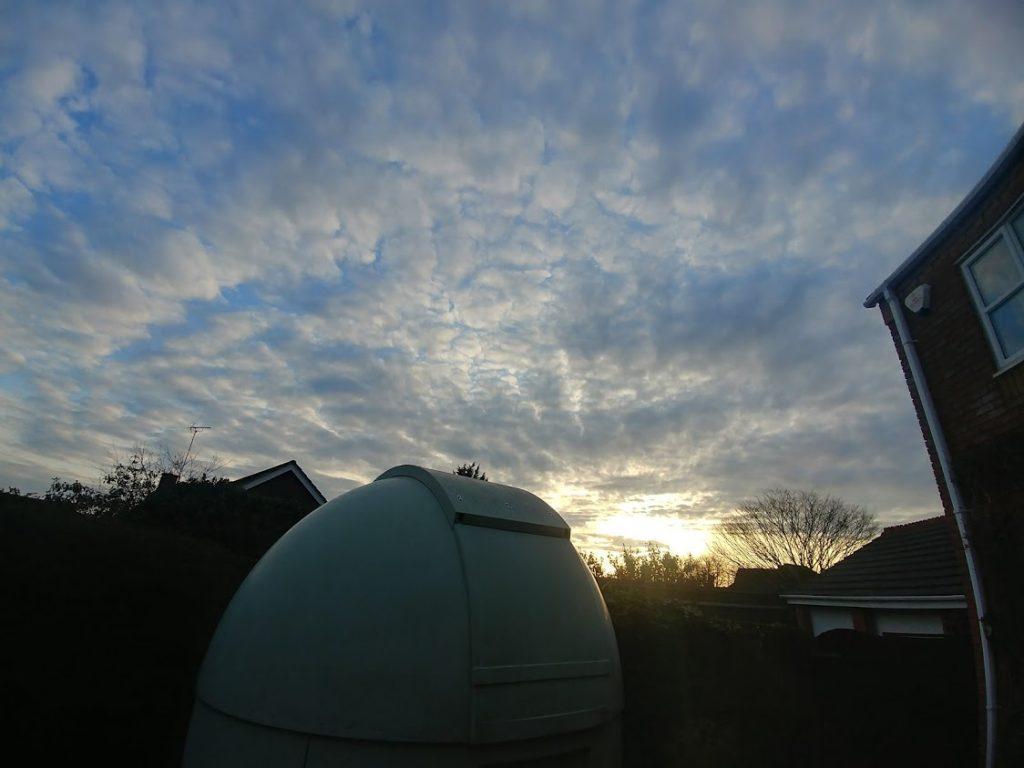Astronomy is one of those hobbies that can, if you let it, very quickly get out of hand (but I hear you say, so can many hobbies). The price of equipment can at times be astronomical, so the reigns have to be pulled on so many times to try and prevent pulling the trigger on a new “toy”, that will, when it arrives, inevitably attract clouds for many weeks before it gets “first light”.
As you start your own journey into the hobby, aperture fever soon kicks in. The logic follows thus: If I get a bigger scope, I’ll see fainter things and in much more detail. Of course, with the digital revolution, cameras becoming much more sensitive, and image processing skills ensuring that every photon is captured and used, that argument is now very much redundant. Amateurs are producing wonderful images of faint, delicate deep sky objects with little more than an 80mm refractor.
But your astronomy journey results in you coming up against quite a number of stumbling blocks along the way. You get everything you think you need, then once the clouds do clear and you get to do some observing and imaging, you suddenly realise that there is yet another hurdle to get over, so a look on the forums or a quick Google, shows you that there is yet another accessory, that promises to get you over your present dilemma. Great! But very soon as that is breached you very soon find yourself smack bang up to your next barrier, requiring another browse of the goodies to source yet another gizmo to get you over that. So what seemed a pretty cheap start into the hobby very soon racks up in expense. Only strong willpower, an empty bank account or an unsympathetic partner prevents you from spending much, much more.
So after all my years, where am I? I have currently got an observatory in the garden. It has an EQ6 mount on a pier. In the past my willpower has not been the strongest, but it means that I have collected a wide range of equipment (when I could afford to). I have 3 telescopes, amongst which are an ED80 (used for wide-angle imaging and guiding) and an Evostar 120mm refractor (Mainly used for solar imaging with a Quark). I have far too many eyepieces, Barlow lenses, Webcams and other paraphernalia. In the last few months a friend of mine has loaned me a CCD camera. Initial results look extremely good, so I will be purchasing this as it can image deep sky objects in incredible detail.
My main scope is a 190 Mak-Newt. It has been a revelation using this, with a wide field of view, the images are stunning and the images are fantastic. Its design produces star images without those nasty spikes (I’m not going to argue with you on this, they’re nasty!). With this I realise that my 10″ Meade LX200 held me back on deep sky imaging for many years, its long focal length giving such a small field of view (even with a field reducer), resulting in faint images, which required longer exposures, etc, etc. Thank goodness I sold it on and plumped for the Mak-Newt.
So my imaging of both Deep Sky Objects, Solar and Lunar are probably as top rate as they can be now.
So you would think that I would be extremely happy, Yes?
Well, not quite!!
In 13 days time I am leaving my job, and semi-retiring.
My observatory dome is being sold and being dismantled that very same day.
So as I get to spend more time in it, I’m losing it. Go figure?
But it’s all part of our longer term strategy.
Sue and I are downsizing. We are moving about 5 miles away, so not too far.
This enables me to retire early so Sue and I can spend more time together.
But, I’m not giving up my beloved astronomy, no way!
The “new” house has a bit of a bigger garden, and Eagleseye Observatory will be re-born.
Skies are also a bit darker than our current location and as the neighbouring houses are a bit further away, I will have access to even more sky. 🙂
When the resurrection happens, this time I will be going for something a little less obvious.
So although the Sun may be setting on it now, the New Eagleseye Observatory will be a shed with a roll-off roof.
I will be installing my current equipment within that (once I get time to get the new observatory built while doing all the jobs that will need doing in the house).
Will I be happy then? You (Or mostly Sue) would hope so. Unfortunately not!
Looking back, the one thing I do miss about the old LX200 is the very long focal length.
This was ideal for planetary webcam imaging. None of my present scopes can get the image scale required to get decent planet images, without using Barlow lenses. These degrade the image enormously due to the extra glass between the object and the Webcam, so I currently find this aspect of imaging a real struggle.
To rectify this “problem”, I would love to get hold of a Celestron C11.
This big aperture, long focal length beast will certainly up the anti on the capabilities of the Eagleseye Observatory Phoenix. With a great near perihelic opposition of Mars later this summer, despite being low down in Sagittarius, with its fairly large image size it will be fantastic to try and get some really decent images for a change. Plus it’s within my budget.
So, if you know anyone who’s selling a C11, please point them in my direction so my willpower is tested to the very limit.
But I know, it’s certainly not that strong…

Dave
